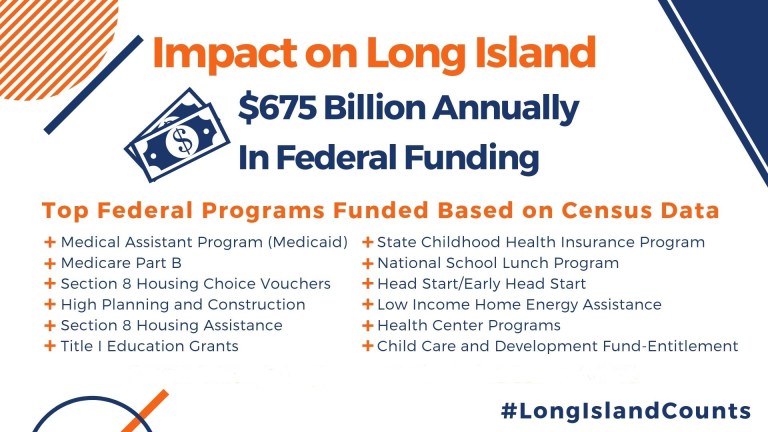
An undercount of only 0.6 percent in the 2020 census could cost the state two of its congressional representatives.
A report released on Tuesday by Nassau County Comptroller Jack Schnirman and the Health and Welfare Council of Long Island dives into just how important the census is for Nassau County and the rest of the state.
Of the state’s hard-to-count counties, Nassau County is listed as fifth. Hard-to-count areas are ones with high concentrations of young children, highly mobile people, racial and ethnic minorities, non-English speakers, low-income households, individuals experiencing homelessness, undocumented immigrants, people who distrust the government, LGBTQ+ individuals and people with disabilities, according to the comptroller’s report.
Kings County, or Brooklyn, is the hardest to count county in the state and Suffolk County is listed as fourth.
Nassau County’s population, as shown in the report, is home to 40 percent people of color, while 5 percent are children under 5, 15 percent are people living in or near poverty and 6 percent of the population speaks limited English.
The federal government issues $675 billion in funding each year, and the 2020 census determines the amount of aid each municipality receives.
“Getting an accurate count for the census is critical for Nassau County; $675 billion in annual federal funding is on the line, and it’s critical Long Island gets its fair share,” Schnirman said.
Programs such as Medicaid, Medicare, Section 8 housing, special education grants, Childhood Health Insurance, foster care and the National School Lunch Program are among those funded by census data.
Census data is also used to determine how legislative districts are drawn for both federal and state government and how school aid is allocated for the next decade.
“Completing the census is the single most important action a parent can take to secure their child’s future because of the significant 10-year funding impact on our schools and communities,” said Rebecca Sanin, president and chief executive officer of the Health and Welfare Council of Long Island.
Nassau and Suffolk counties have teamed up to ensure Long Island is accurately represented in the 2020 census and have formed 2020 Census Complete Count Committees in conjunction with the Health and Welfare Council and the Long Island Community Foundation.
“We have built an army of census soldiers to advance an accurate count in 2020 to ensure that New York can receive its fair share of funding,” Sanin said. “We need every Long Island resident to complete the census and recruit their family, friends and neighbors to be counted.”
A question on citizenship status will not be included in the 2020 census as of early last week when a federal judge in New York signed an order to definitively block the question.
The census form can be submitted online, by phone or by mail. April 1 is National Census Day, the reference day for the 2020 census.






